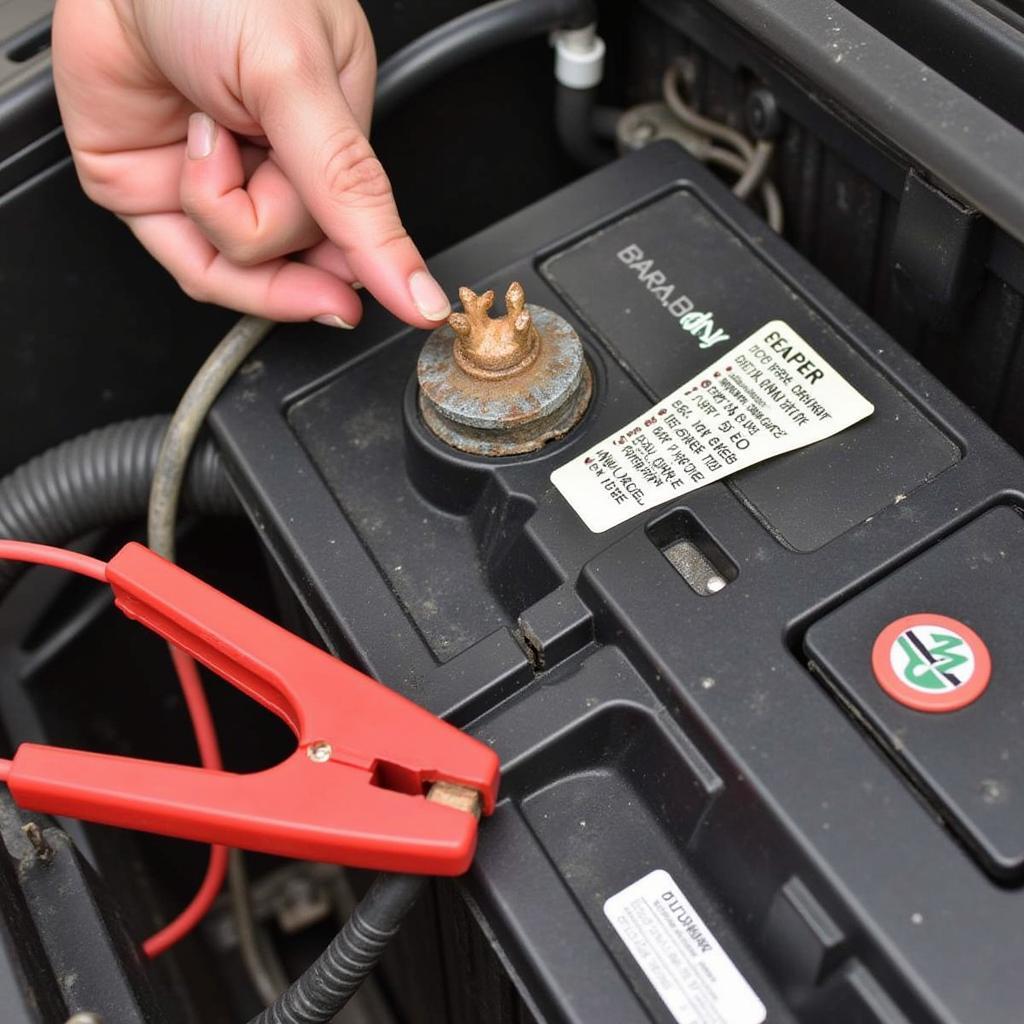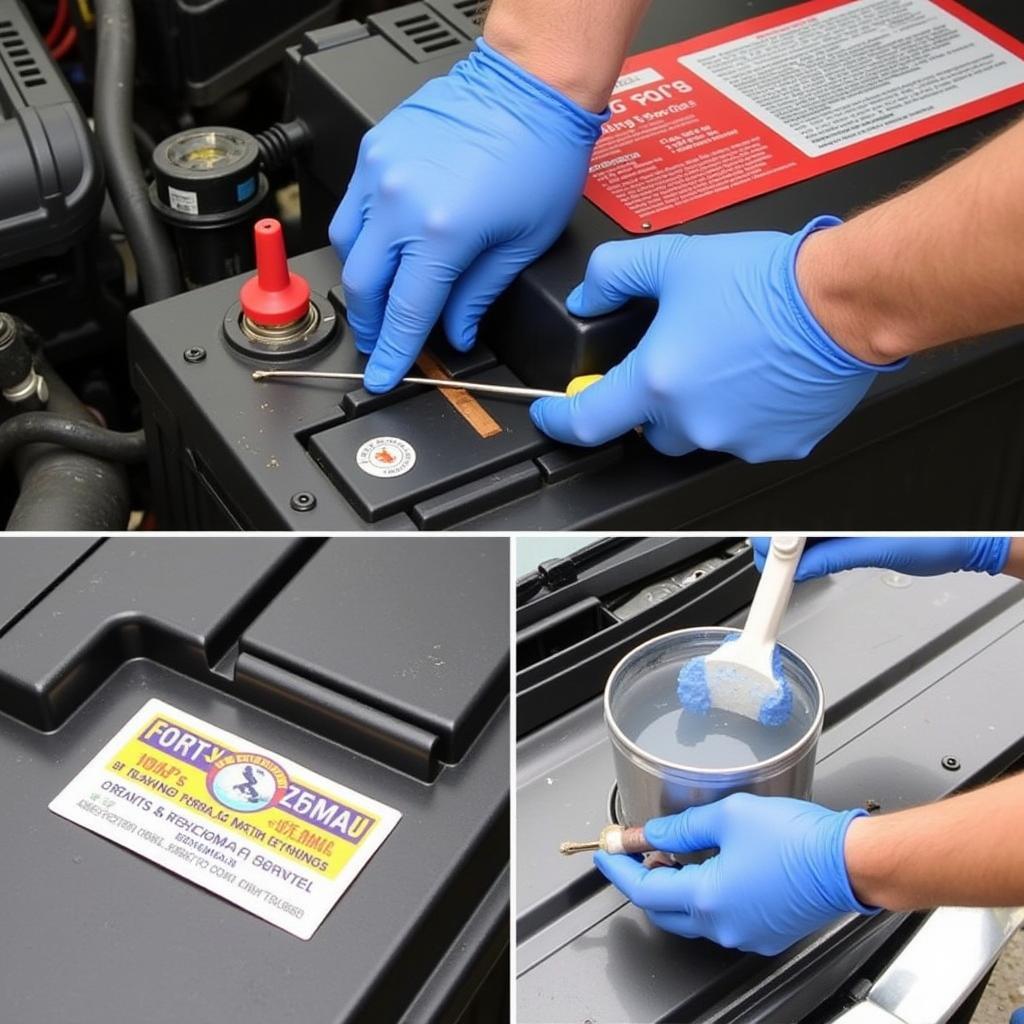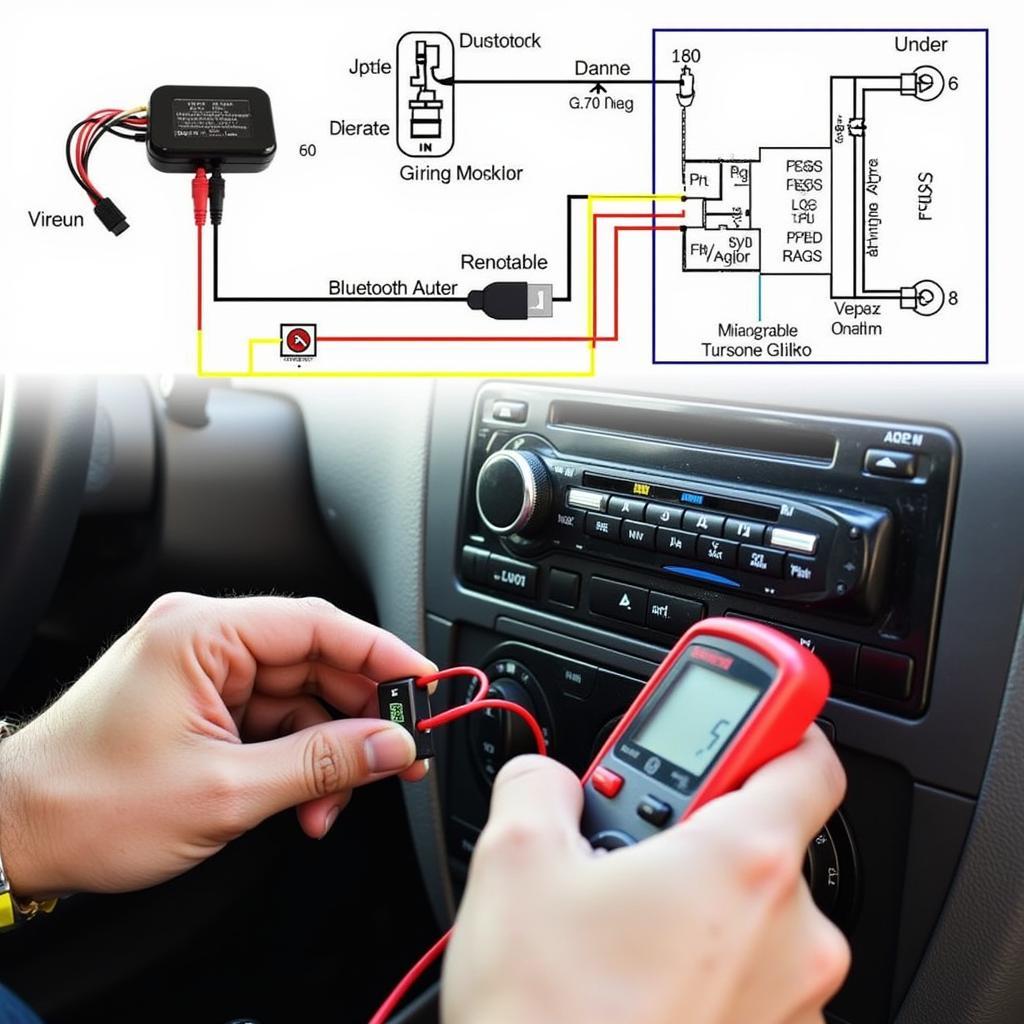A dead battery is the most common reason a car won’t start, and corrosion is often the underlying cause. If your car won’t start and you suspect battery corrosion, this guide will provide you with the knowledge and steps to diagnose and fix the problem. We’ll cover everything from identifying corrosion to cleaning it and preventing future occurrences.
Understanding Why Your Car Won’t Start Due to Battery Corrosion
Battery corrosion, that white, powdery substance around your battery terminals, interferes with the electrical connection needed to start your car. This buildup, often a mixture of lead sulfate and other chemicals, acts as an insulator, preventing the current from flowing from the battery to the starter. The result? Your car won’t start. Even if the battery itself has charge, corrosion can effectively render it useless. So, before you jump to conclusions about a dead battery, check for corrosion.
 Car battery corrosion preventing the engine from starting
Car battery corrosion preventing the engine from starting
Identifying Battery Corrosion
Corrosion usually appears as a white, powdery substance, but it can also be greenish or bluish. You’ll typically find it around the battery terminals, but it can also spread to the cables and other nearby metal parts. If you see any of these signs, it’s time to take action. Ignoring battery corrosion can lead to more significant problems down the road, including damage to your battery, starter, and other electrical components. It can even prevent your car from starting altogether.
Did you know that even a small amount of corrosion can prevent your car from starting? lexus is250 brake warning light is another common issue we can help you resolve.
Tools You’ll Need
- Wire brush or battery terminal cleaner
- Baking soda and water mixture
- Petroleum jelly or battery terminal protector spray
- Safety glasses and gloves
Cleaning Battery Corrosion
- Disconnect the battery: Always disconnect the negative terminal first, followed by the positive terminal.
- Clean the terminals: Use a wire brush or a battery terminal cleaner to remove the corrosion. Be sure to wear safety glasses and gloves to protect yourself from the corrosive material.
- Neutralize the acid: Apply a mixture of baking soda and water to the terminals and surrounding areas to neutralize any remaining acid.
- Rinse and dry: Rinse the area with clean water and dry thoroughly.
- Protect the terminals: Apply petroleum jelly or battery terminal protector spray to the cleaned terminals to prevent future corrosion.
- Reconnect the battery: Reconnect the positive terminal first, followed by the negative terminal.
 Cleaning car battery terminals
Cleaning car battery terminals
“Regular battery maintenance, including cleaning corrosion, can significantly extend the life of your battery,” advises John Smith, Senior Automotive Electrical Engineer. Don’t wait until your car won’t start to address this issue.
Preventing Future Battery Corrosion
Regularly inspecting and cleaning your battery terminals can prevent corrosion from building up in the first place. Applying a battery terminal protector after cleaning can also help to create a barrier against corrosive elements. Additionally, ensure your battery is securely fastened to prevent vibrations, which can contribute to corrosion. Another helpful tip is to keep your battery clean and dry. Moisture can accelerate the corrosion process.
Why is my car battery corroded?
Several factors can cause battery corrosion, including leaks in the battery casing, overcharging, and exposure to extreme temperatures.
How often should I clean my car battery?
It’s a good idea to inspect your battery terminals every few months and clean them as needed.
What are the signs of a bad car battery?
Aside from corrosion, signs of a bad battery include slow cranking, dim headlights, and clicking sounds when you try to start the car. audi a3 brake pad warning light reset is something completely different but also important for your car’s health.
“Don’t underestimate the impact of regular maintenance. A simple cleaning can save you time, money, and frustration down the road,” says Maria Garcia, Certified Automotive Technician. If you’re unsure about tackling this yourself, it’s always best to consult a qualified mechanic. 2016 audi a3 brake warning light reset can also be performed by a mechanic if you are not comfortable doing it yourself.
Conclusion
Car won’t start battery corrosion is a common problem that can be easily diagnosed and resolved with the proper steps. By understanding the causes of corrosion, knowing how to clean it, and taking preventative measures, you can ensure your car starts reliably every time. Remember, regular maintenance is key to keeping your car in top condition. If you are experiencing brake warnings like 06 dodge ram 1500 brake light warning, you should address them immediately. brake light 2016 subaru warning is another example of a brake issue that needs your attention.

